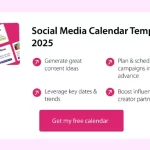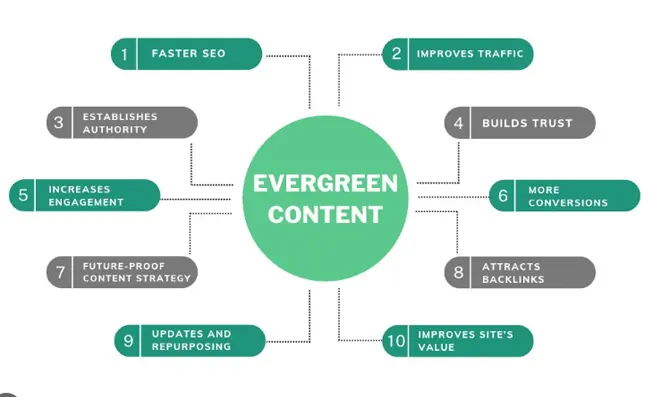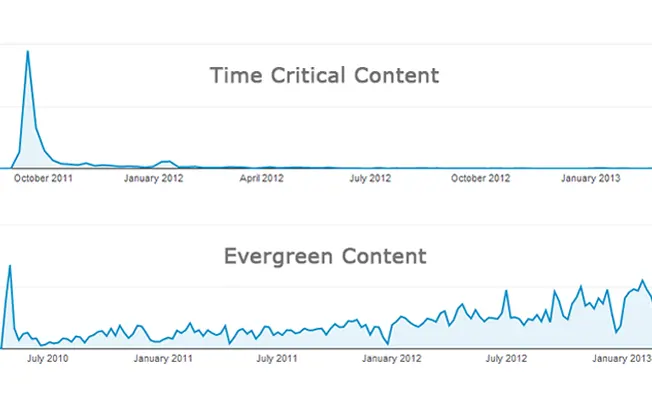The Ultimate Beginner’s Guide to Evergreen Content
If you’re in the world of content creation or SEO optimization, you’ve likely come across the term “evergreen content.”
For many marketers, evergreen content is essential because it remains relevant over time, driving consistent traffic and improving search engine rankings. When done right, it builds SEO authority, attracts quality backlinks, and maintains long-term value.
With the rise of artificial intelligence (AI), the way content is discovered on Google is evolving. AI Overviews—often described as enhanced featured snippets—deliver highly detailed search results, prioritizing in-depth and authoritative content.
So, what exactly is evergreen content, and how can you use it effectively in your content marketing strategy?
In this article, we’ll explore the best formats for evergreen content and how to maximize its impact for your business.
- What is evergreen content?
- Common evergreen formats
- What are examples of evergreen content?
- Tips for writing evergreen content
- How can you promote evergreen content?
- Update evergreen content regularly
- More evergreen content ideas
What is evergreen content?
Evergreen content is search-optimized material that remains relevant and valuable to readers over time—much like evergreen trees that stay green throughout the year.
While it may seem like all online content has longevity since blog posts remain accessible after publication, evergreen content stands apart. It retains its relevance long after being published, continuously attracting search traffic that grows over time.
By investing in evergreen content, marketers can establish a steady flow of traffic and deliver lasting value to their audience.

What is not evergreen content?
To better understand what qualifies as evergreen content, it helps to look at examples of content that are not considered evergreen:
-
News articles
-
Statistics or reports that will soon become outdated
-
Pieces centered on pop culture or fleeting trends
-
Current fashion and seasonal trends
Evergreen content has no expiration date and maintains its value over time. For instance, an article about a presidential election or this year’s marketing trends might be relevant now, but it won’t stand the test of time as evergreen content.
Common evergreen formats

What are examples of evergreen content?
Here are a few examples of evergreen articles that provide long-term value:
-
How to Choose the Best Social Media Channels for Your Business – A helpful guide for beginners looking to build and execute a social media strategy.
-
How to Care for a New Puppy – Pet-related content is always popular, and this type of article offers valuable advice for new pet owners. Plus, who doesn’t love puppies?
-
10 Ways to Enjoy Hot Chocolate – Seasonal twists on classic favorites can boost traffic, especially during colder months. Content that taps into timeless interests with a fresh perspective makes for great evergreen material.
Of course, these topics might not align with your business, so it’s important to create content that is both valuable to your audience and relevant to your brand.
Making Your Evergreen Content Stand Out
One of the biggest challenges in creating evergreen content is that many popular industry topics have already been covered—sometimes hundreds of times.
To stand out, try:
-
Finding a unique angle or offering a fresh take on the subject.
-
Using keyword research tools like Google Keyword Planner, Ahrefs, or Semrush to identify topics with good search volume but less competition.
-
Providing deeper insights, case studies, or expert opinions to add value beyond what’s already available.
By taking these steps, your content is more likely to rank higher in search engine results and remain useful over time.
Pro Tip: Sites like Wikipedia, IMDb, and eHow are excellent examples of evergreen content—exploring them can help spark ideas for your own content strategy.
Tips for writing evergreen content
Evergreen content isn’t the only way to success
Evergreen content is valuable, but not everything you create needs to be—or should be—evergreen. Timely, trending, and topical pieces also play a crucial role in content marketing. These types of articles are ideal for short-term campaigns, helping to generate a surge of traffic and leads within a limited timeframe.
The most effective content strategy balances evergreen content with timely pieces, ensuring both long-term visibility and immediate engagement.
How can you promote evergreen content?
To determine if your content has dropped in search rankings and needs updating, use tools like the Ahrefs Positions Tracker. This tool helps you track keyword performance, and by checking your weekly digest email, you can identify which pages need attention to remain competitive.
With new content constantly being published, other pieces may start competing for the same keywords. Keeping your content fresh, relevant, and comprehensive is key to maintaining strong rankings.
Key Factors to Consider When Updating Content
When refreshing your evergreen content, focus on these essential elements:
-
Usefulness – Can readers take immediate action based on the information provided?
-
Clarity – Is the content easy to understand? Does it flow logically without confusing terminology?
-
Tone – Is the writing friendly, approachable, and authoritative?
-
Shareability – Can users easily share the content on social media with built-in sharing options?
By regularly updating and optimizing your content, you increase its chances of staying visible, valuable, and competitive in search rankings.
Update evergreen content regularly
Beyond promoting your evergreen content, it’s essential to keep it fresh and relevant.
While evergreen content requires minimal updates, industry developments, new research, or emerging trends may provide opportunities to enhance it with additional insights or updated links.
Regularly refreshing your content—including updating its published date—can also improve SEO rankings. Industry experts, including Neil Patel, have highlighted how this practice can significantly boost search visibility.
After making updates, republish and promote your content as if it’s brand new to maximize engagement and reach.

More evergreen content ideas
If you’re searching for effective evergreen content formats, here’s a list to spark ideas:
-
Original research – Exclusive data and insights that remain relevant over time
-
Successful case studies – Real-world examples showcasing proven strategies
-
‘What went wrong?’ case studies – Analyzing failures and lessons learned
-
How-to guides for beginners – Step-by-step instructions for those new to a topic
-
How-to guides for advanced users – In-depth strategies for experienced readers
-
How-to checklists – Actionable, easy-to-follow lists for completing tasks
-
How to choose the best product – Guides that help readers make informed purchasing decisions
-
How to achieve something over time – Long-term strategies for success
-
Resource lists – Curated collections of valuable tools, links, and references
-
Best free and paid tools lists – Comprehensive reviews of essential tools in a niche
-
Best books for a specific goal – Book recommendations tailored to industry topics
-
Common mistakes in a niche or industry – Helping readers avoid pitfalls and errors
-
History of a topic or product – A timeline of key developments and milestones
-
‘Greatest of’ round-ups – Highlighting the top examples in a field
-
Best or worst practices for a specific goal – Strategies that lead to success or failure
-
Complete glossary of a topic or niche – Definitions of key terms for reference
-
Everything you need to know about ____ – A deep dive into an important subject
Keep this list handy for inspiration. Since evergreen content should be a continuous focus in your content strategy, you’ll likely find opportunities to use many of these formats over time.
Supercharge your digital marketing career
Earning a digital marketing certification is one of the fastest and most effective ways to break into the industry. The DMI Professional Diploma in Digital Marketing, designed to align with industry standards, equips you with essential skills to thrive in the digital space.
Through this program, you’ll master the fundamentals of digital marketing, learn how to integrate AI into your strategies, and develop key soft skills. You’ll also gain hands-on experience with critical channels like SEO, content marketing, social media, email marketing, display advertising, and video marketing—empowering you to execute high-impact campaigns across any industry.
